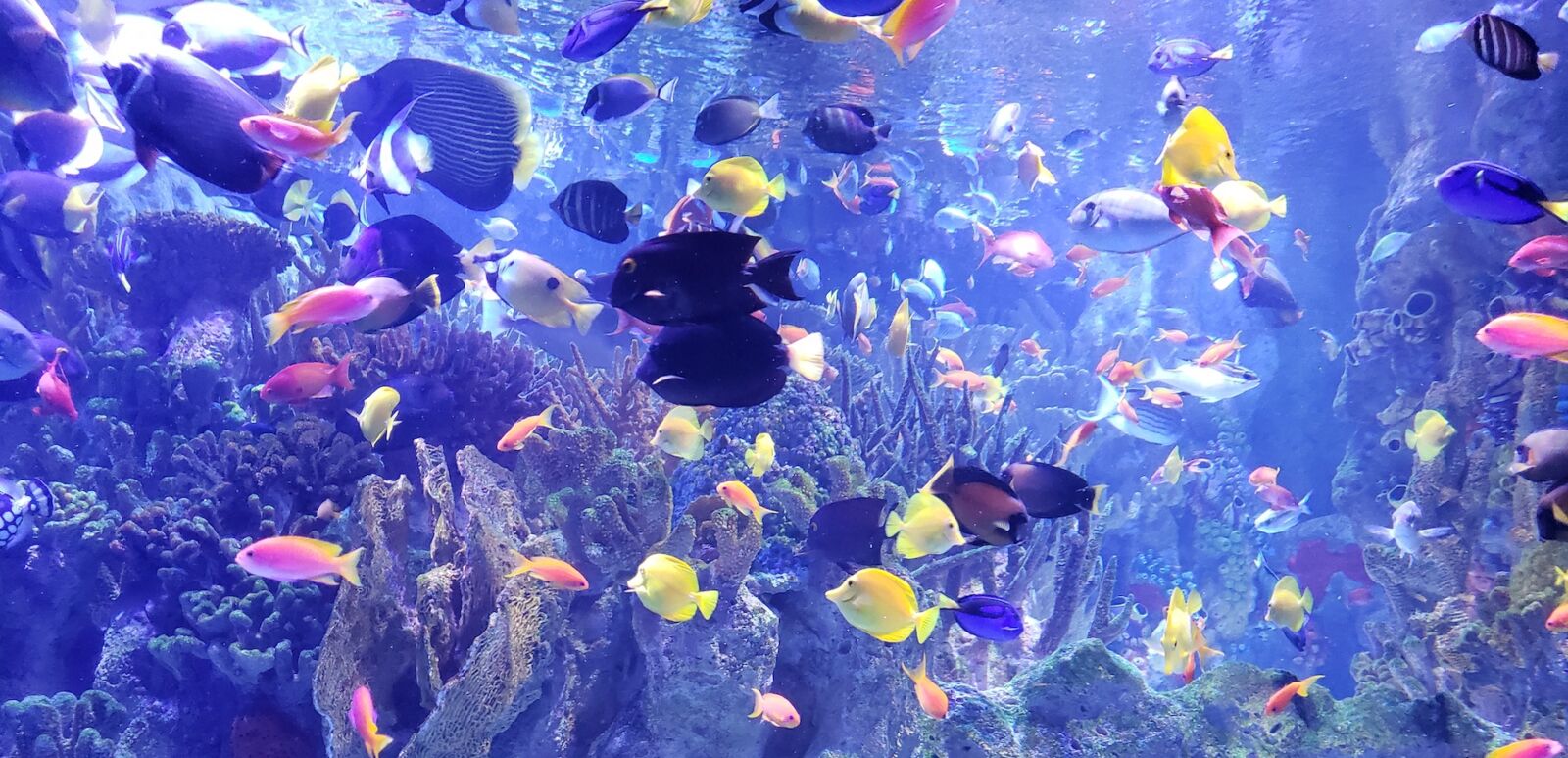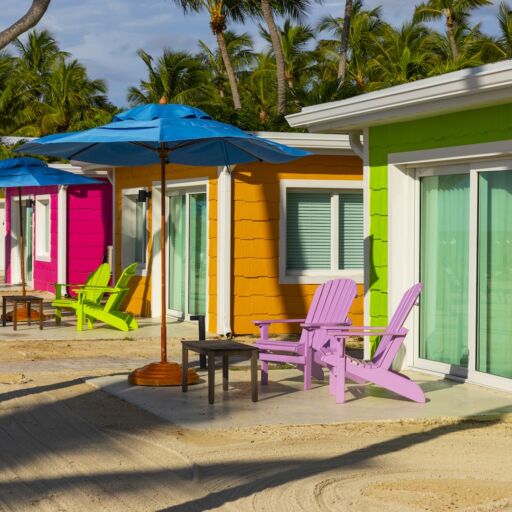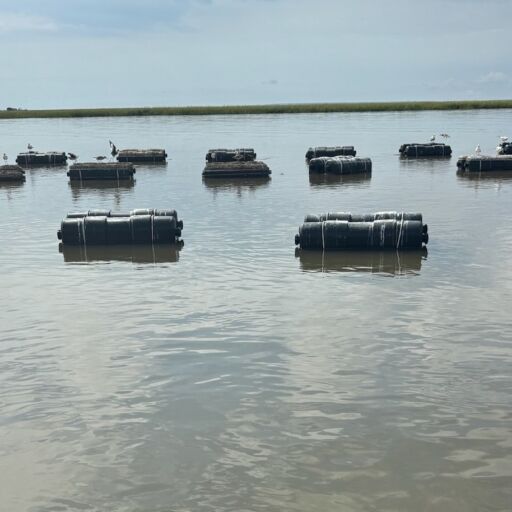Today’s aquariums make the days of looking at angelfish on field trips seem quaint. While you’ll still find fascinating schools of fish swimming around, nowadays you can expect to be dazzled by exhibits of incredible species from across the globe like whale sharks, belugas and inland animals like the laughing kookaburra, an Australian kingfisher bird. As technology has progressed, aquariums have turned their focus toward immersive experiences, building 4D theaters where visitors can learn about marine life beyond the fish tank.
We dived deep in search of the United States’ best aquariums and found that the top contenders have built some seriously impressive exhibits, many of which allow you to go behind the scenes to learn more about the inner workings of caring for the creatures. These top aquariums also invest their time and resources into conservation efforts and programs that focus on environmentally sustainable practices and rehabilitating animals. Check ’em out below.
Audubon Aquarium – New Orleans, La.
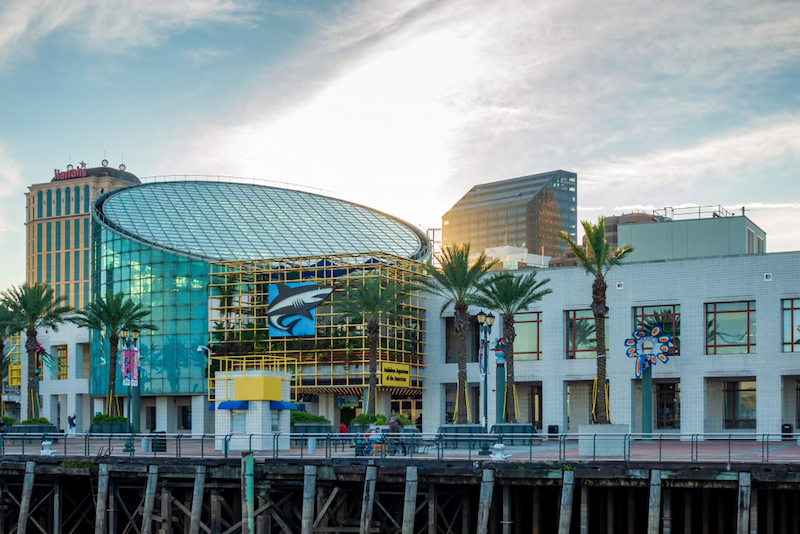
Situated on the banks of the Mississippi River, the Audubon Aquarium is a New Orleans gem that’s often overshadowed by the bead-tossing, booze-soaked revelry elsewhere in the city. The family-friendly aquarium is home to more than 3,600 animals representing over 250 species, and is conveniently located close to the French Quarter, making it a great place for adults to visit when they need a break from Pat O’Brien’s famous Hurricanes. The aquarium first opened in 1990 and is run by the Audubon Nature Institute, which also operates the Audubon Zoo and oversees wildlife research programs in the region. Sea-life enthusiasts can visit the Caribbean Reef exhibit and walk through a 30-foot tunnel surrounded by angelfish (hey, they’re still cool), explore native animals from the Mississippi River region like catfish and the remarkable leucistic white alligator or check out a 400,000-gallon saltwater tank with sea turtles and sharks. If you haven’t been before, now’s the time to visit: the aquarium reopened on June 8, 2023, with new exhibits and a state-of-the-art Insectarium where you can prance through a butterfly garden or eat bugs, if you’re into that sort of thing.
Georgia Aquarium – Atlanta, Ga.

The Georgia Aquarium is massive, like, really big. Located in the heart of downtown Atlanta just north of the Centennial Olympic Park, the aquarium was once the largest in the world, from its opening in November 2005 until 2012 when Chimelong Ocean Kingdom opened in Zhuhai, China, and the S.E.A. Aquarium opened in Singapore. Despite being surpassed in size by the two behemoths, the Georgia Aquarium is still the fifth-largest aquarium in the world and the largest in the United States. Today, the aquarium has seven galleries containing over 11 million gallons of water, the pièce de résistance being the 6.3-million-gallon whale shark exhibit, Ocean Voyager, full of marine life of the Mesoamerican Barrier Reef System. It’s the first aquarium outside of Asia to showcase the species and has one of the world’s largest viewing windows and an underwater acrylic tunnel. Apart from the aquarium’s other outstanding exhibits (including a manta ray exhibit — one of only four on the planet) and a virtual reality simulator where visitors can scan prehistoric seas, the Georgia Aquarium is part of the Smithsonian Affiliations program and focuses on conservation efforts in Yucatan and the Indian River Lagoon, among other locations.
Monterey Bay Aquarium – Monterey, Calif.
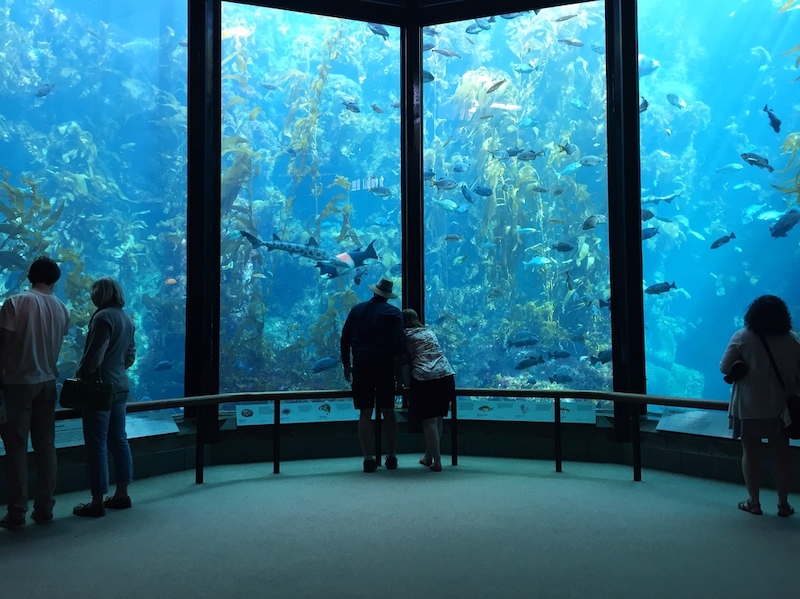
You know it, you love it, and you knew it’d be on our list. The Monterey Bay Aquarium is quite possibly the most well-known aquarium in the States. It’s the San Diego Zoo of aquariums, the Michael Jordan of fish sanctuaries and the Times Square of America’s aquatic exhibitions. If you fancy yourself a lover of our underwater friends, you need to visit here. The prominent oceanarium is situated on Monterey Bay’s historic Cannery Row roughly two hours south of San Francisco by car and focuses on regional marine habitats. After opening in October 1984, the aquarium demoed the first living kelp forest, a nearly three-story-high exhibit maintained using a mix of filtered and raw seawater home to indigenous fish of Monterey Bay. Monterey Bay also spearheaded the animal husbandry of jellyfish and first published Seafood Watch in 1999, a seafood advisory list and leader in the sustainable seafood movement. The aquarium is so highly regarded that it inspired the design of the Marine Life Institute in the Disney/Pixar film “Finding Dory.” All the usual suspects you want to see at an aquarium are here, including sea otters, sharks and a massive Pacific octopus.
Mystic Aquarium – Mystic, Conn.
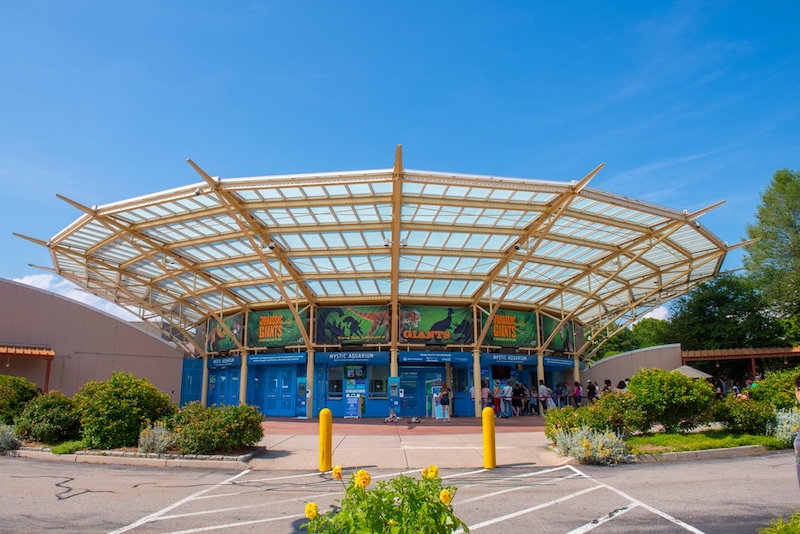
Less than an hour from New Haven by car, the Mystic Aquarium opened in October 1973 in Mystic, Conn. (home of the famous Mystic Pizza). The charming village was chosen as the location for the aquarium for its idyllic harbor and nautical history. (Mystic has been a shipbuilding hub since the 1600s, with over 600 watercrafts being built between the late 18th and early 20th centuries.) You’re here to see Steller sea lions, a species that can grow up to 11 feet long and weigh in at 2,500 pounds, and the only beluga whales in New England. The aquarium introduced the immersive, family-friendly “Dino Seas: An Immersive Journey” exhibit at the end of May. The interactive exhibit is housed in a 10,000-square-foot space and uses animatronics, including a megalodon, and educates visitors about the prehistoric seas through hands-on exhibits, 4D films and a two-story indoor playground.
National Aquarium – Baltimore, Md.
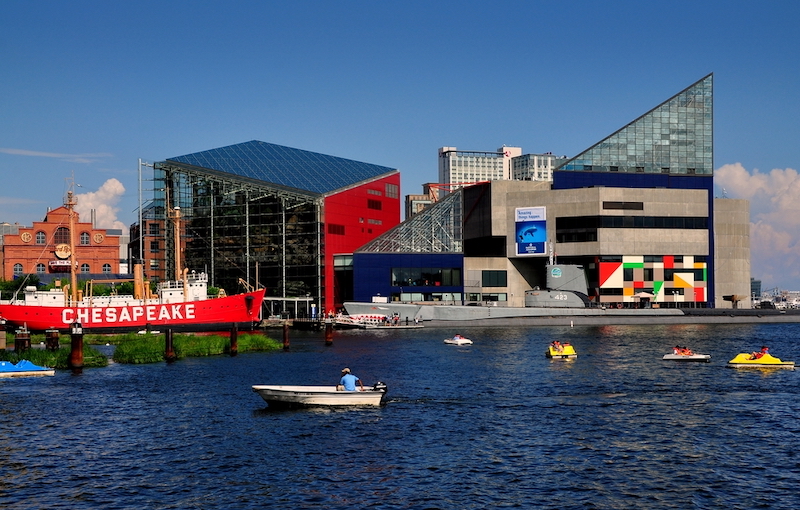
The National Aquarium is our second favorite Baltimore gem, just behind “The Wire” and before psychedelic freak-folk band Animal Collective (sorry, Panda Bear). The nonprofit aquarium is located on Pier 3 in the Inner Harbor in downtown and is one of the largest tourist attractions in Maryland. There are currently over 20,000 animals and 800 species from across the globe on display in exhibits like “Maryland: Mountains to the Sea,” “Upland Tropical Forest” and “Australia: Wild Extremes,” the latter of which is an award-winning exhibit with animals like barramundi, an Asian seabass, and Irwin’s turtles, named after the late, great Steve Irwin. Like so many other aquariums on our list, the National Aquarium Conservation Center is at the forefront of researching issues that affect aquatic ecosystems and participates in clean-up events in Chesapeake Bay wetlands.
New England Aquarium – Boston, Mass.
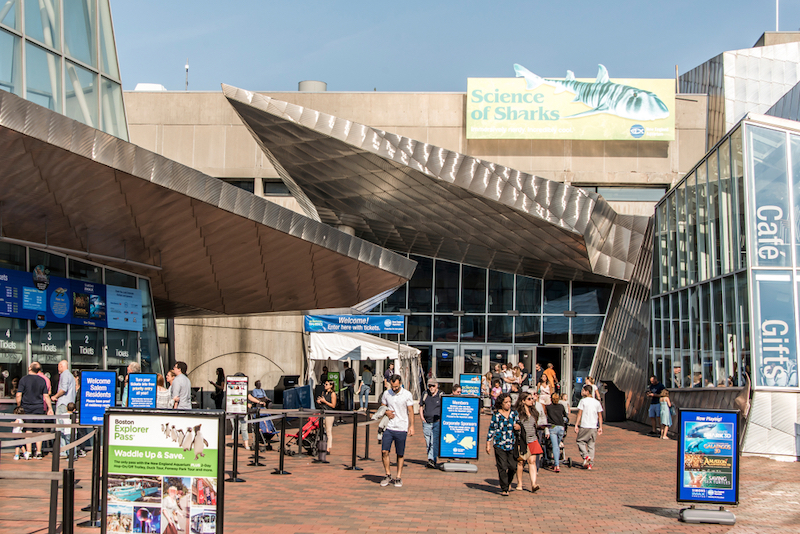
Located on the Boston Harbor, the New England Aquarium first debuted the monolithic Giant Ocean Tank in 1970, a four-story-high Caribbean coral reef full of tropical fish, moray eels, sharks and sea turtles. The cylindrical tank plunges 23 feet down and is the centerpiece of the aquarium, with over 3,000 coral pieces handmade by artists. But you’re also here to interact with stingrays and brown-banded bamboo Sharks at the 25,000-gallon Shark and Ray Touch Tank and visit the Marine Mammal Center to get up close to the Northern fur seals. Fun Fact: this famed aquarium was featured in the 2012 comedy “Ted” and the 2018 film “Aquaman.”
New York Aquarium – Brooklyn, N.Y.
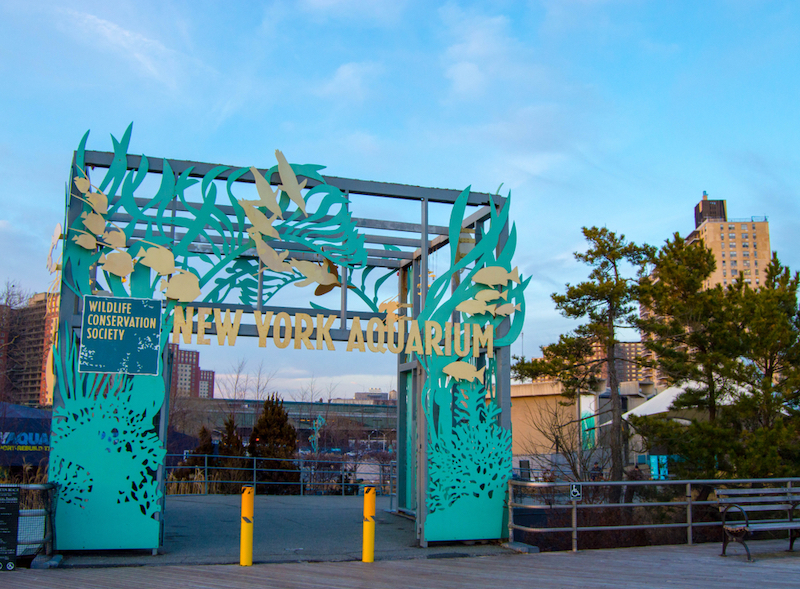
The New York Aquarium is old. In fact, it’s one of the oldest continuously operating aquariums in the country, opening way back in 1896. The Big Apple’s favorite maritime relic is located on the Riegelmann Boardwalk along the southern shore of Coney Island and is spread across 14 acres. The five major exhibits here are the “Aquatheater” (think live sea lion shows), “Conservation Hall,” “Spineless” (you’re here for invertebrates), “Ocean Wonders: Sharks!” and the outdoor “Sea Cliffs” exhibits where you can see otters, sea lions, penguins and seals. Kids will love the hands-on “Playquarium” exhibit complete with a touch pool with purple sea urchin and spider crabs. Before you head to Luna Park to ride the Cyclone, make sure to check out bathysphere, a submersible that made deep-sea voyages in the 1930s.
Seattle Aquarium – Seattle, Wash.

Steps from Seattle’s infamous Pike Place Market (the place where they throw the fish), the Seattle Aquarium is perched on Pier 59 on the Elliott Bay waterfront. Anchored by the Salish Sea, the aquarium places a heavy emphasis on exhibits with marine life from the Puget Sound. The “Window on Washington Waters” explores the state’s coastal ecosystem in a 120,000-gallon exhibit filled with salmon, sea anemones, wolf eels and rockfish and designed to replicate Neah Bay off the Olympic Peninsula. The aquarium also has an impressive display of jellyfish near a giant Pacific octopus, harbor seals, otters and many more animals. In 2024, the Seattle Aquarium plans to open a new Ocean Pavilion complete with a waterfront promenade and a 325,000-gallon tank for sharks and stingrays. Another fun fact: The aquarium was heavily fictionalized in the mega-popular “The Last of Us Part II” video game.
Shedd Aquarium – Chicago, Ill.
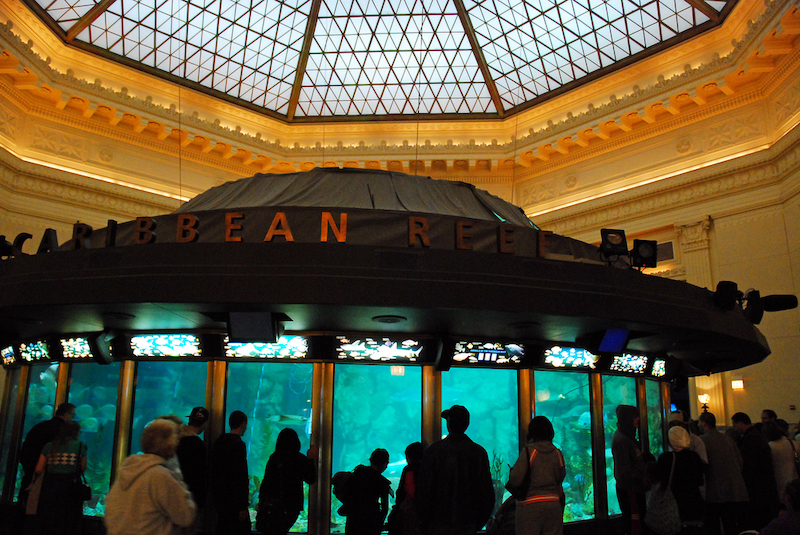
In a city known for its exceptional museum culture, Chicago’s Shedd Aquarium distinguishes itself despite being considerably far from both the Atlantic and Pacific Oceans. The Shedd opened its doors in 1930 and today is one of the largest aquariums in the Western hemisphere as well as the first inland aquarium with a permanent saltwater fish collection. You’ll find the aquarium on the museum campus along Lake Michigan (which might as well be an ocean) near the Adler Planetarium and Field Museum of Natural History, both also worthy of a visit. Like everything in Chicago, the Shedd is big; it contains 1,500 species, including birds, reptiles, marine mammals and, of course, lots of fish. Some of our favorite permanent exhibits are “Waters of the World,” “Amazon Rising” and “Wild Reef,” the latter of which is a recreation of a central Philippine coral reef on the Apo Island Marine Sanctuary where you can spot rays, sharks and Japanese Wobbegongs, among other species. Pacific Northwest fans should visit the “Abbott Oceanarium,” which mimics the coastal ecosystem and has animals like the Pacific white-sided dolphin, belugas and adorable sea otters.
Tennessee Aquarium – Chattanooga, Tenn.
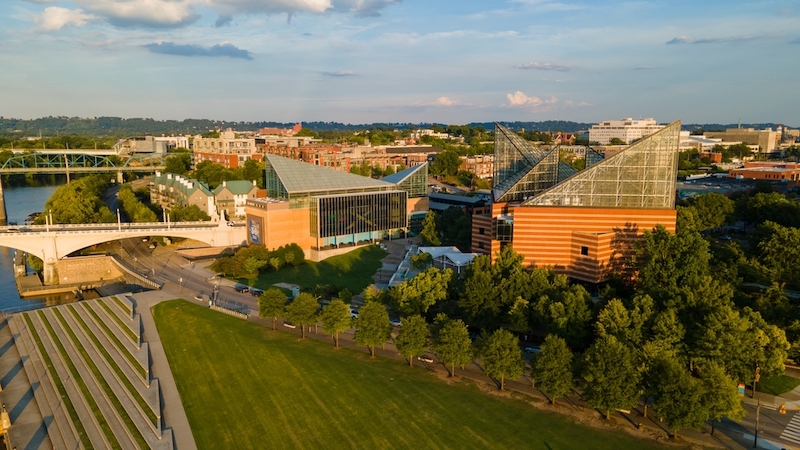
The Tennessee Aquarium is located way down yonder in downtown Chattanooga, Tenn., which is unfortunately nowhere near Alan Jackson’s beloved Chattahoochee. The aquarium first opened in 1992 and operated out of a single building until a major expansion in 2005, and today is split between the River Journey and Ocean Journey buildings. River Journey is designed around the “story of the river” and follows a raindrop from the Appalachian Mountains on its journey to the Gulf of Mexico, with exhibits like the “Appalachian Cove Forest,” “Delta Country” and “Rivers of the World.” Conversely, the 60,000-square-foot Ocean Journey building houses 700,000 gallons of water and a touch tank where you can interact with small sharks and rays.


